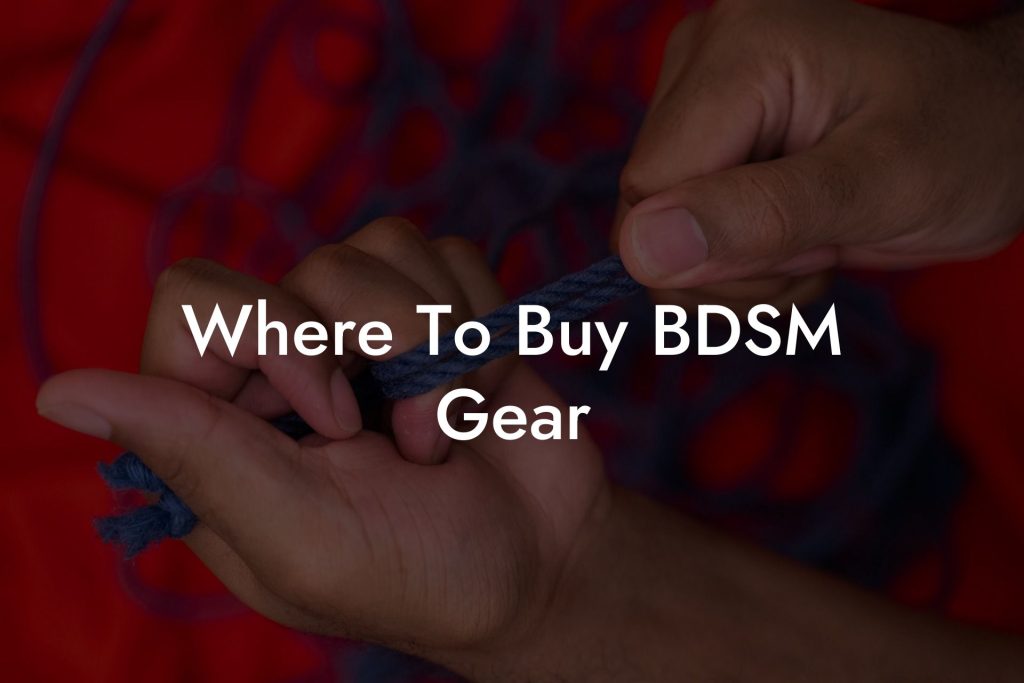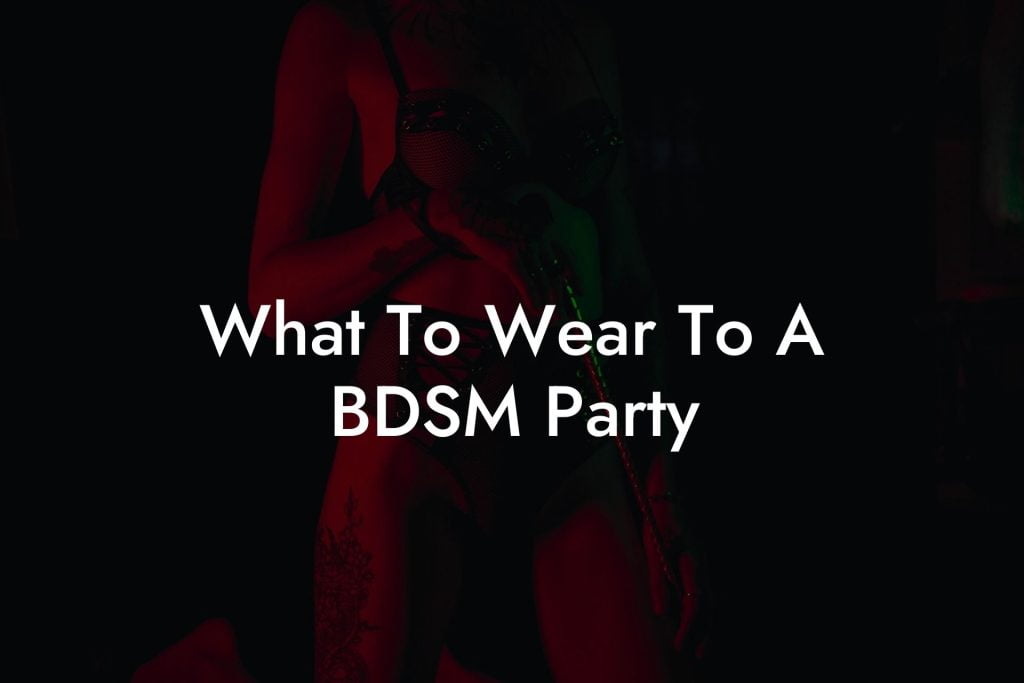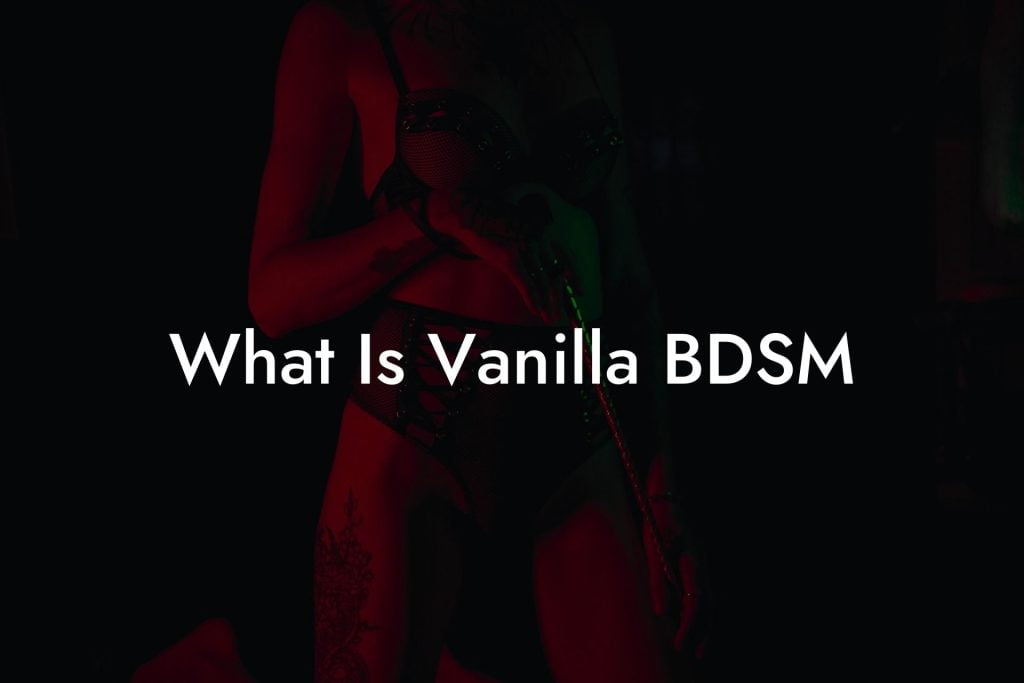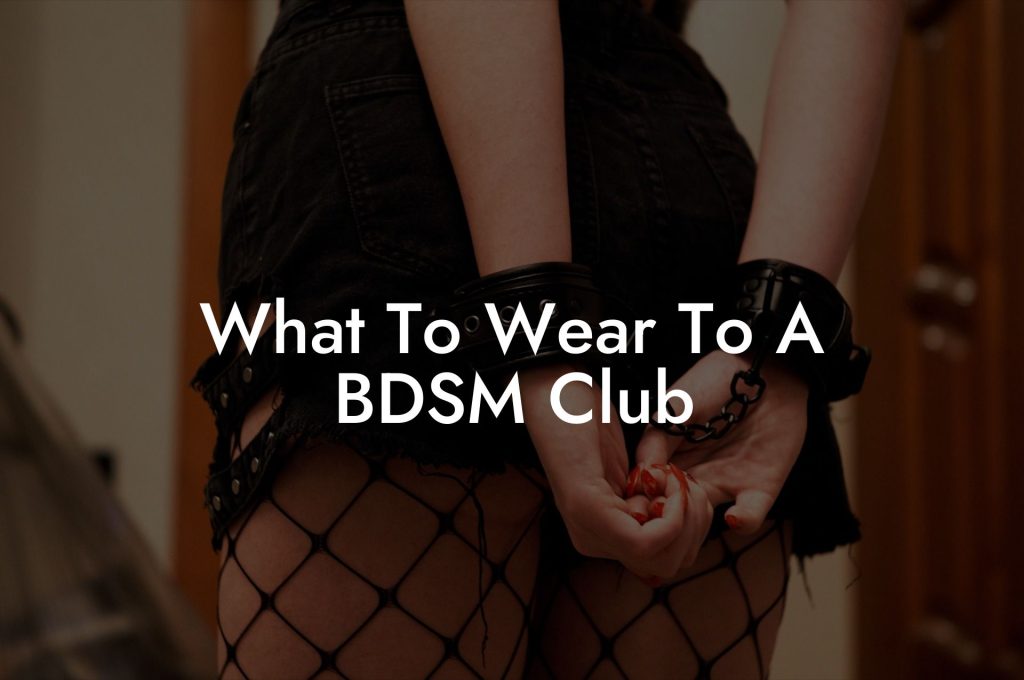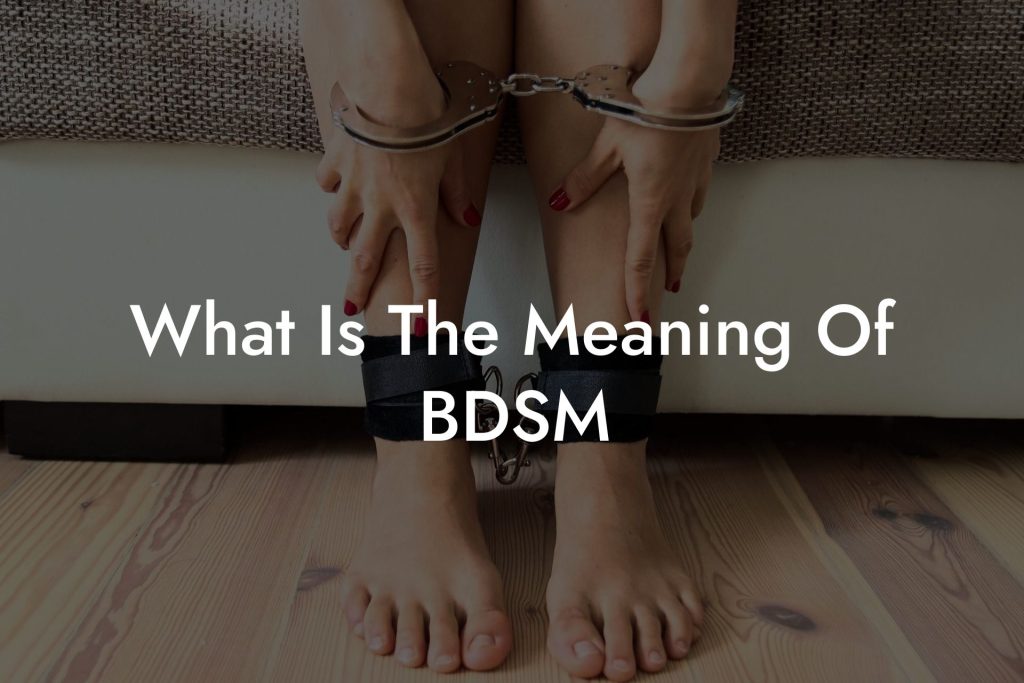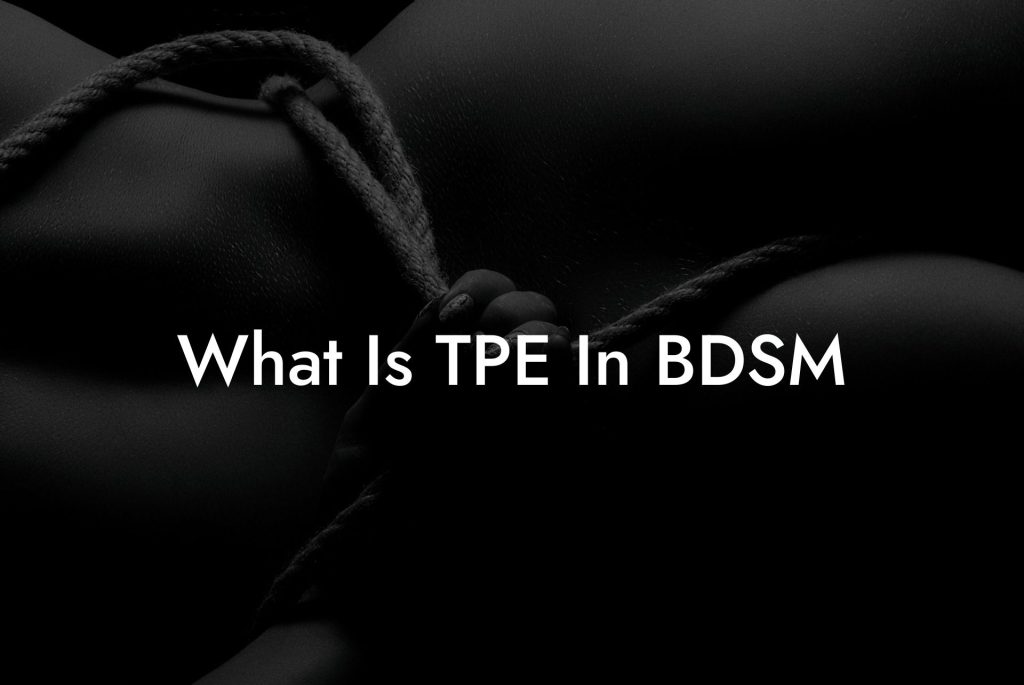CNC stands for Consensual Non-Consent—a term that might sound contradictory at first, but in the world of BDSM, it represents one of the most intense and nuanced forms of power exchange. In a CNC scene, the submissive partner consents in advance to temporarily relinquish their right to withdraw consent during the play, all within strictly negotiated limits and with safety protocols firmly in place. This dynamic allows for the simulation of scenarios where resistance is minimized, creating an atmosphere of heightened vulnerability and intensity—all while remaining entirely consensual.
Quick Links to Useful Sections
- Understanding Consensual Non-Consent (CNC)
- What Does CNC Stand For?
- The Core Principles Behind CNC
- Negotiating a CNC Scene
- Pre-Scene Discussions
- Establishing a Safe Environment
- Executing a CNC Scene
- Initiating the Scene
- Maintaining Control and Adaptability
- Aftercare: Healing and Reflecting on CNC Play
- Physical Aftercare
- Emotional and Psychological Aftercare
- Benefits and Considerations of CNC Play
- Potential Benefits
- Risks and Considerations
- Real-Life Experiences and Insights
- Case Study: Emma’s Journey into CNC
- Case Study: Alex’s Transformative CNC Scene
- Expert Insights: Guidance from the BDSM Community
- Words of Wisdom
- Practical Tips for Trying CNC
- FAQ: Your “What Does CNC Stand For In BDSM” Questions Answered
Understanding Consensual Non-Consent (CNC)
What Does CNC Stand For?
CNC stands for Consensual Non-Consent. It is a type of BDSM play where the submissive partner agrees to a temporary suspension of their ability to withdraw consent during a scene. This is done within carefully defined boundaries that are established well before the scene begins. Although it may seem paradoxical, the “non-consent” aspect is entirely agreed upon beforehand, making it a controlled, safe, and highly charged experience.
The Core Principles Behind CNC
Like all BDSM practices, CNC is built on the pillars of consent, communication, and trust. The submissive partner’s pre-scene agreement to suspend their right to withdraw consent is what differentiates CNC from other types of BDSM play. However, this suspension is not absolute—it is limited by negotiated boundaries, safe words (or signals), and detailed aftercare plans.
In CNC, the Dominant is given the responsibility to guide the scene with heightened intensity, while the submissive, despite temporarily setting aside the ability to withdraw consent, remains protected by the prior negotiations and safety measures. This creates an environment where both partners can explore extreme dynamics with the assurance that their limits are respected.
Negotiating a CNC Scene
Pre-Scene Discussions
Given the intensity of CNC, thorough negotiation is non-negotiable. Before engaging in CNC play, partners must discuss:
Looking for the best BDSM & Kink OnlyFans content creators? Here is a list of of our favourites that you will love:
-
- Best Fetish & Girl Next Door OnlyFans - ✨ IVANKA ✨ >> View Content
- Best Foot Worship & Cosplay OnlyFans - Hillary is Wet 💦 >> View Content
- Best Dirty Latina, Anal & MILF OnlyFans - Paula Flores 😈 >> View Content
- Best Tiny Tits OnlyFans - ⍣⭐️ Sofia Parker ⭐️⍣ >> View Content
- Best Sub OnlyFans - 🍌Hanna Banana🍌 >> View Content
- Best Fetish & Kink Messaging OnlyFans - Molly✨ >> View Content
- Best Naughty Asian OnlyFans - Hanna Zuki OF's Cutest Asian Girl 💕 >> View Content
- Best Girlfriend Experience OnlyFans - 💕Sara Core💕 >> View Content
- Best Trans OnlyFans - Sam 🍆 BEST Trans OnlyFans🍆 >> View Content
- Best Femboy OnlyFans - Taylor🏳️⚧️ #1 Femboy OnlyFans >> View Content
- Best Submissive Brunette & Anal OnlyFans - Dana🍭Candy >> View Content
- Best Innocent Teen & Huge Tits OnlyFans - ❣️Anny❣️19 y.o. BUSTY student girl >> View Content
- Best Brat Princess OnlyFans - Your Princess 👑 >> View Content
- Best Horny Gamer Girlfriend OnlyFans - 👀 Bamby_Eyes 👀 >> View Content
- Best Custom Content & Fantasy OnlyFans - 🎀Emmeline🎀 >> View Content
- Best Dominatrix & Femdom OnlyFans - ❤️🔥 MISS ARINA 👠 >> View Content
- Best Cosplay & Erotic Fantasies OnlyFans - ¸.·✩ Mika Morris 💮 >> View Content
- Best Submissive Teacher OnlyFans - 💫Lola La Fleur 💫 >> View Content
- Best Fetish Cosplay OnlyFans - 🐱 Little Kitty Kate 👉👌 >> View Content
Not quite what you are looking for? View the full list →
- Boundaries: What specific activities are on the table, and what are absolutely off-limits? Both partners need to have a clear understanding of their hard and soft limits.
- Safe Words and Signals: Even in a CNC scene, it’s vital to have a prearranged safe word or non-verbal signal that can be used if things become too overwhelming. Some CNC practitioners agree on an "escape clause" that, if triggered, allows the scene to be paused, even if the general consent is suspended.
- Aftercare Plans: CNC scenes can be physically and emotionally taxing. Outline a comprehensive aftercare strategy that includes physical comfort (hydration, warmth, massage) and emotional support (debriefing, reassurance).
- Role Clarity: Define what the scene will involve. The submissive should clearly understand which parts of their consent are being temporarily set aside and under what conditions the Dominant will operate.
These discussions help ensure that the CNC experience is built on mutual trust and clear expectations, making it as safe and fulfilling as possible.
Establishing a Safe Environment
A CNC scene requires a controlled, secure environment. This means:
- Privacy: Choose a space where you won’t be disturbed, allowing both partners to focus fully on the scene.
- Safety Tools: Have quick-release tools (such as safety scissors) readily available in case you need to end the scene immediately.
- Pre-Scene Check-Ins: Ensure both partners are physically and emotionally ready to engage. A quick physical check (ensuring circulation, comfort) and a verbal affirmation of readiness set a positive tone.
A safe environment reinforces the trust that is crucial for a successful CNC scene.
Executing a CNC Scene
Initiating the Scene
Once negotiation and preparation are complete, the Dominant takes control by setting the tone for the scene. Begin by reiterating the boundaries and safe words that have been established. A clear, confident start helps to transition both partners into the intense experience of CNC.
Although the submissive has agreed to a temporary suspension of their ability to withdraw consent, the Dominant should still be attentive to non-verbal cues and subtle signs of distress. Continuous monitoring is essential to ensure that, if any aspect of the scene becomes too overwhelming, appropriate adjustments can be made.
Maintaining Control and Adaptability
During the CNC scene, the Dominant should exercise control with both assertiveness and empathy. Key strategies include:
- Continuous Monitoring: Observe your partner’s physical reactions and emotional cues closely. Even slight signs of discomfort should be addressed immediately.
- Adaptive Intensity: Adjust the intensity of the scene on the fly based on the feedback you receive—whether through safe words, gestures, or other signals.
- Emotional Check-Ins: While the submissive has temporarily set aside the ability to withdraw consent, subtle, continuous check-ins are crucial to maintain a safe experience.
This adaptive approach helps balance the intense nature of CNC with the underlying need for safety and care.
Aftercare: Healing and Reflecting on CNC Play
Physical Aftercare
After the scene, immediate physical aftercare is vital. This may include:
- Hydration and Nourishment: Offer water or a light snack to help restore energy and maintain circulation.
- Comfort Measures: Use blankets, warm baths, or gentle massages to soothe any physical tension.
Physical aftercare helps your body recover from the intensity of the scene and reinforces the care that underpins CNC play.
Emotional and Psychological Aftercare
Equally important is emotional aftercare. Engage in a debriefing session where both partners can share their experiences:
- Discuss the Scene: Talk about what worked, what felt overwhelming, and how you both felt during the experience.
- Provide Reassurance: Affirm your partner’s worth and the trust they placed in you, reinforcing that the scene was a shared, consensual journey.
- Plan for Future Adjustments: Use the debrief as an opportunity to adjust boundaries or techniques for future scenes.
This reflective process helps both partners process the intense emotions of CNC play and sets the stage for continuous growth and mutual understanding.
Benefits and Considerations of CNC Play
Potential Benefits
CNC can offer profound benefits, such as:
- Deep Trust and Intimacy: The intense vulnerability and pre-negotiated nature of CNC create an extraordinary bond between partners.
- Emotional Release: For many submissives, CNC is cathartic, providing a powerful release of built-up tension and an opportunity for self-discovery.
- Enhanced Communication: The extensive negotiation and continuous check-ins required in CNC foster better communication skills in the relationship.
Risks and Considerations
Despite its benefits, CNC carries risks. The intensity of the scene can be emotionally and physically demanding. Miscommunication or insufficient aftercare can lead to distress. It is critical that both partners fully commit to ongoing communication and be prepared to adjust or pause the scene if needed.
Real-Life Experiences and Insights
Case Study: Emma’s Journey into CNC
Emma, a seasoned submissive, shares how CNC play allowed her to explore deep layers of vulnerability and trust with her Dominant. Through careful negotiation and continuous communication, Emma experienced a cathartic release that transformed her approach to power exchange. The key, she notes, was the balance between intensity and safety—ensuring that even in the heat of the moment, her well-being was never compromised.
Case Study: Alex’s Transformative CNC Scene
Alex, a veteran Dominant, recounts a CNC scene that redefined his dynamic with his partner. By meticulously planning every detail and monitoring his partner’s non-verbal cues throughout the scene, Alex was able to guide an intense, emotional experience that left both of them feeling empowered and more deeply connected. His story illustrates the transformative power of CNC when executed with care, consent, and continuous feedback.
Expert Insights: Guidance from the BDSM Community
Words of Wisdom
Veteran Dominant Marcus Steele advises, “CNC is one of the most intense forms of BDSM play. It demands complete trust, thorough negotiation, and constant communication. If you’re considering CNC, take your time to educate yourself and ensure that every detail is agreed upon.”
BDSM counselor Fiona Rivera adds, “The key to CNC is preparation and aftercare. It can be an incredibly transformative experience when both partners are fully committed to safety and open dialogue. Never underestimate the importance of a robust debrief after the scene.”
Practical Tips for Trying CNC
- Educate Thoroughly: Research extensively through books, podcasts, and online forums to understand the psychological and physical aspects of CNC.
- Negotiate Every Detail: Engage in in-depth pre-scene negotiations about boundaries, safe words, and aftercare. Document these agreements if possible.
- Start Small: Begin with lower-intensity scenarios and gradually build up as trust and comfort grow.
- Monitor Continuously: Even though consent is suspended during the scene, remain vigilant for any signs of extreme distress and be ready to pause immediately.
- Plan Comprehensive Aftercare: Develop a detailed aftercare plan that addresses both physical recovery and emotional processing.
- Reflect and Debrief: After each CNC scene, discuss what worked well and what could be improved to enhance future experiences.
FAQ: Your “What Does CNC Stand For In BDSM” Questions Answered
1. What does CNC stand for in BDSM?
CNC stands for Consensual Non-Consent, a type of BDSM play where the submissive agrees in advance to temporarily suspend their right to withdraw consent within predetermined boundaries.
2. How is CNC different from non-consent?
CNC is entirely consensual and negotiated before the scene, with safety protocols and clear boundaries in place. Non-consent, on the other hand, involves coercion or abuse without any form of agreement.
3. Why do some people engage in CNC play?
Many find that CNC allows for a deep exploration of vulnerability, intense catharsis, and a profound power exchange that strengthens trust and intimacy when conducted safely.
4. How do partners negotiate a CNC scene?
Partners discuss their boundaries, agree on safe words or signals, and outline exactly which activities are included in the CNC play. Detailed pre-scene negotiation is essential.
5. Is CNC safe?
CNC can be safe if practiced with thorough negotiation, clear communication, continuous monitoring, and robust aftercare. It requires a high level of trust and preparedness from both partners.
6. What safe words or signals are used in CNC?
CNC safe words or signals are agreed-upon cues that allow either partner to pause or stop the scene immediately if it becomes too overwhelming, even though general consent is suspended during the play.
7. Can CNC be part of a long-term BDSM relationship?
Yes, some couples incorporate CNC play into their long-term dynamics, provided there is continuous negotiation and both partners maintain open communication about their evolving needs.
8. What type of aftercare is recommended after a CNC scene?
Aftercare should include both physical measures—such as hydration, massage, and warmth—and emotional support through a debriefing conversation to help process the intense experience.
9. Who is CNC intended for?
CNC is intended for individuals who have established a deep level of trust and communication with their partner and are looking to explore the boundaries of power exchange in a highly controlled, consensual manner.
10. Where can I find more information about CNC in BDSM?
Reputable resources include books like "SM 101: A Realistic Introduction," online communities such as FetLife and Reddit’s r/BDSM, podcasts like "Kink Academy," and specialized workshops on advanced BDSM dynamics.
Resources and Community Support: Your Next Steps in Exploring CNC
- FetLife: Connect with communities that focus on advanced BDSM dynamics, including CNC, and learn from experienced practitioners.
- Reddit: Engage with subreddits like r/BDSM for advice, personal experiences, and support on CNC play.
- BDSM Literature: Read books like "SM 101: A Realistic Introduction" to gain a deeper understanding of CNC and other advanced power exchange dynamics.
- Podcasts: Listen to "Kink Academy" for expert insights and real-life stories about navigating CNC safely and effectively.
- Workshops and Seminars: Attend events focused on advanced BDSM techniques to gain hands-on experience and personalized guidance.
CNC play is one of the most intense forms of BDSM, offering the potential for profound emotional release and deep connection when executed with thorough preparation, clear communication, and robust aftercare. Explore CNC at your own pace, educate yourself continuously, and ensure that every step of the journey is rooted in trust and mutual respect.



